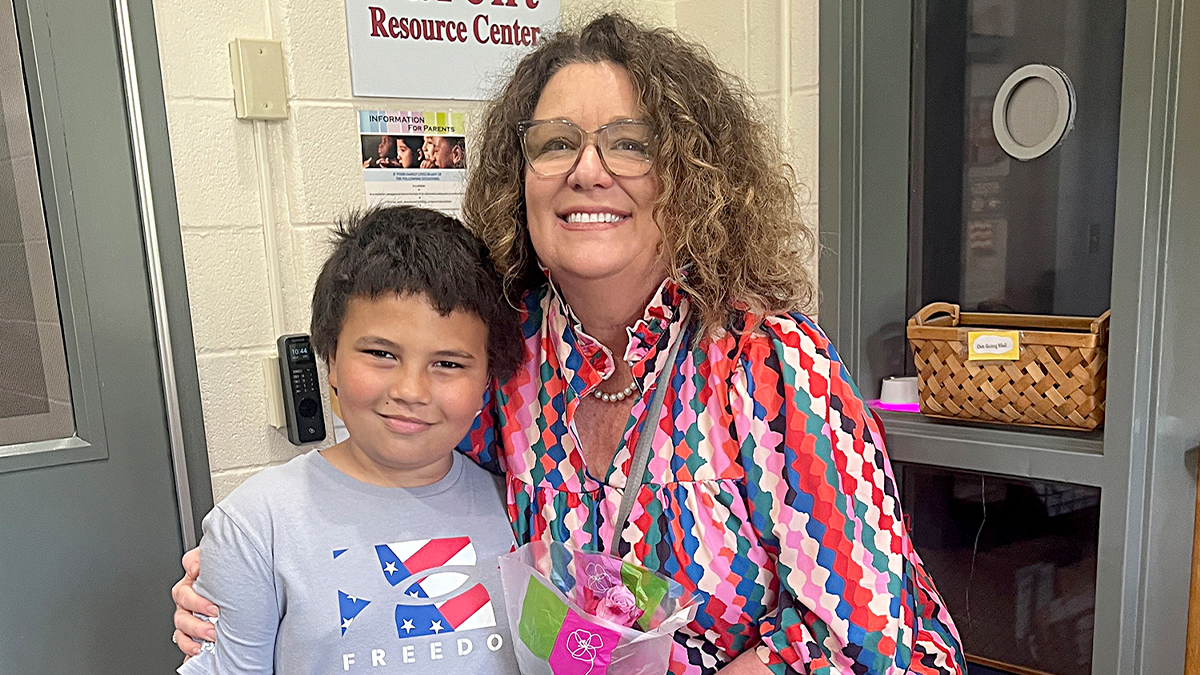
Katrina Smith: Listen and Lead
Katrina Smith builds achievement by communicating intuitively and supporting students with emotional issues.
Topics: Principal Leadership
As principal of Buchanan Primary School in Buchanan, Georgia, Katrina Smith is known for her leadership of a collaborative, high-achieving school environment. The school received a national Blue Ribbon Schools of Excellence Award in 2024, recognizing achievement in student focus and support, school culture, family partnerships, and more.
Smith credits her advanced communication and relationship-building skills for helping ensure that her vision for Buchanan stays top-of-mind in the school and community. “People won’t follow those they don’t trust to take care of them,” she says. “A good leader must first learn to follow and serve others.”
Having confronted her own emotional hardships, Smith addresses students’ behavioral issues using strategies that identify root causes and build resilience; she recently authored an award-winning dissertation on restorative circles. “You can’t punish pain out of a child,” Smith says. “You have to understand it, name it, and give them tools to rise above it.”
Principal magazine asked Smith about emotional poverty, communication, and more. Here’s what she said:
What are the goals that drive how you approach the job of principal?
I aim to create a school culture where connection, consistency, and compassion aren’t just ideals; they’re practiced daily. Every child deserves a calm, safe, and academically rich environment, and I push myself and my team to lead with purpose, not just policy.
Restorative circles are at the heart of our approach. In our rural setting, resources can be limited, so we use these circles to create belonging, de-escalate emotional triggers, and rebuild trust, one conversation at a time. I remain committed to ensuring students feel seen, heard, and supported.
What’s the best “leadership moment” you’ve had as a principal?
[When I] realized that teachers trusted me enough to call at 10 p.m., come into my office, and share their fears—not to complain, but because they wanted help solving a problem. That kind of trust isn’t given; it’s earned over time through consistency and follow-through.
What hidden talents do you have that aid in your leadership role?
I can intuitively spot a shift in someone’s tone or energy faster than they realize it’s happening. That emotional radar helps me support staff before issues snowball, and it helps students feel seen even when they can’t articulate what they need.
What is your favorite part of the school day?
First thing in the morning, I stand at the front door and greet students by name. That five-second interaction can change the course of a student’s entire day—and sometimes mine, too.
How do you encourage communication with teachers in your school?
Communication is the backbone of our culture. I keep my calendar open for teacher meetings, but I also make it a point to initiate conversations—especially with those who don’t naturally speak up. When teachers know you’ll show up for them, they’ll show up for students.
What is the best book you’ve read in the last year (for personal PD)
Emotional Poverty by Ruby Payne profoundly shaped my understanding of the emotional struggles students face. It reinforced the importance of identifying the roots of behavior and addressing students’ emotional needs before expecting academic success.
What do you like to do in the off hours?
Outside of school, I enjoy cooking, crocheting, painting, and traveling—I’ve visited 48 U.S. states so far. These hobbies help me recharge and maintain balance while broadening my perspective beyond the school environment.

